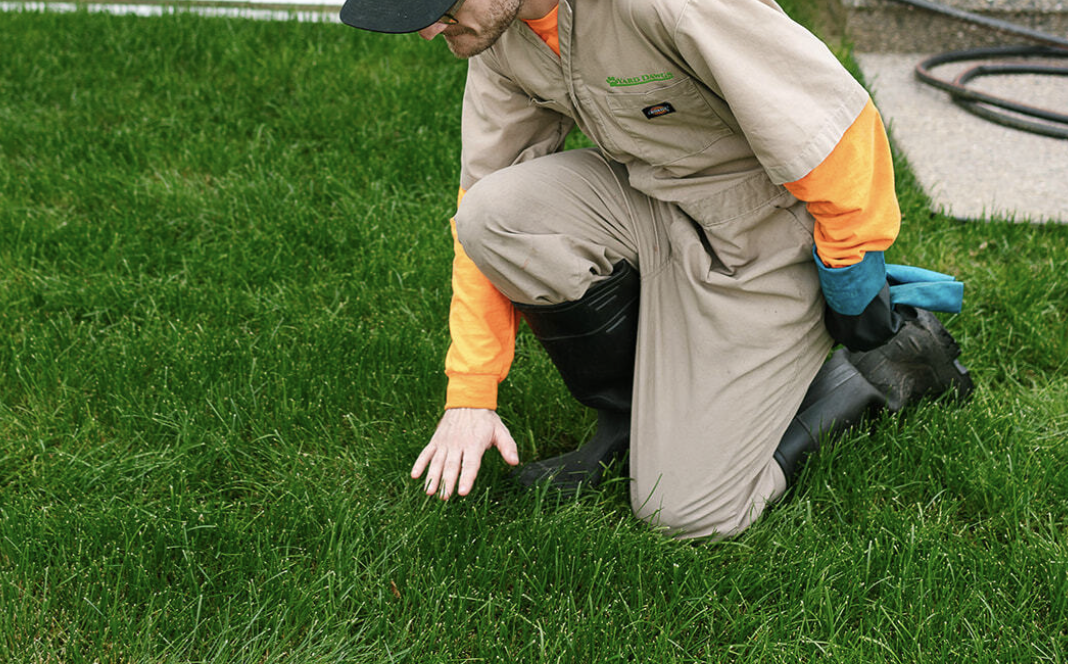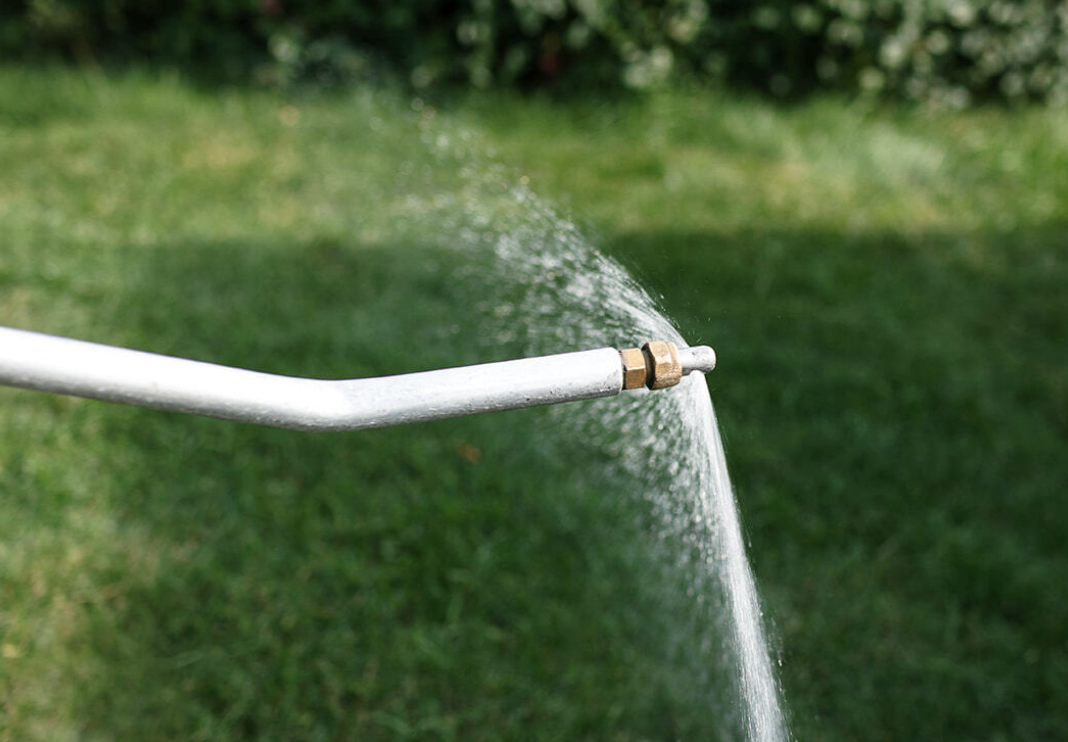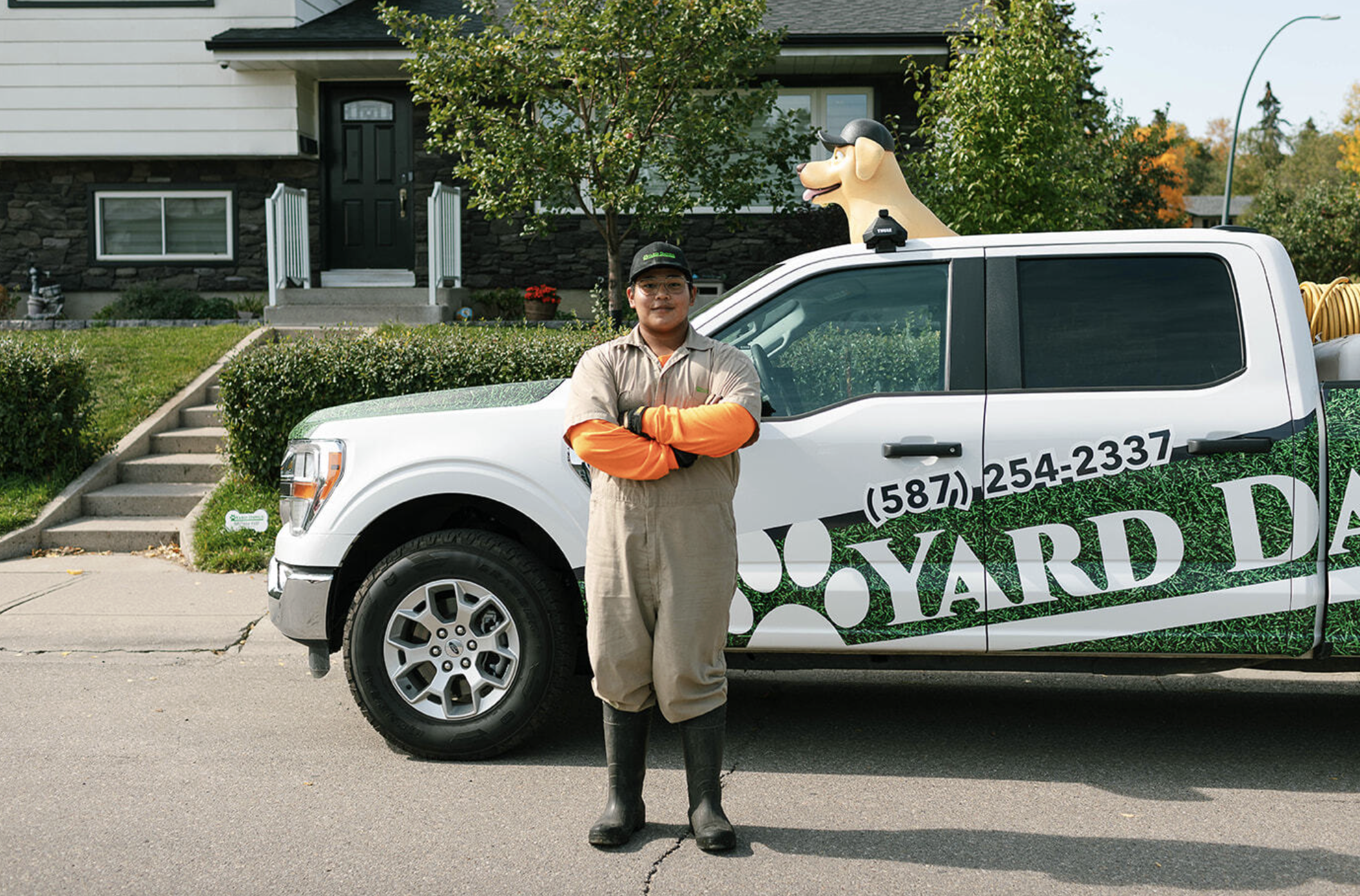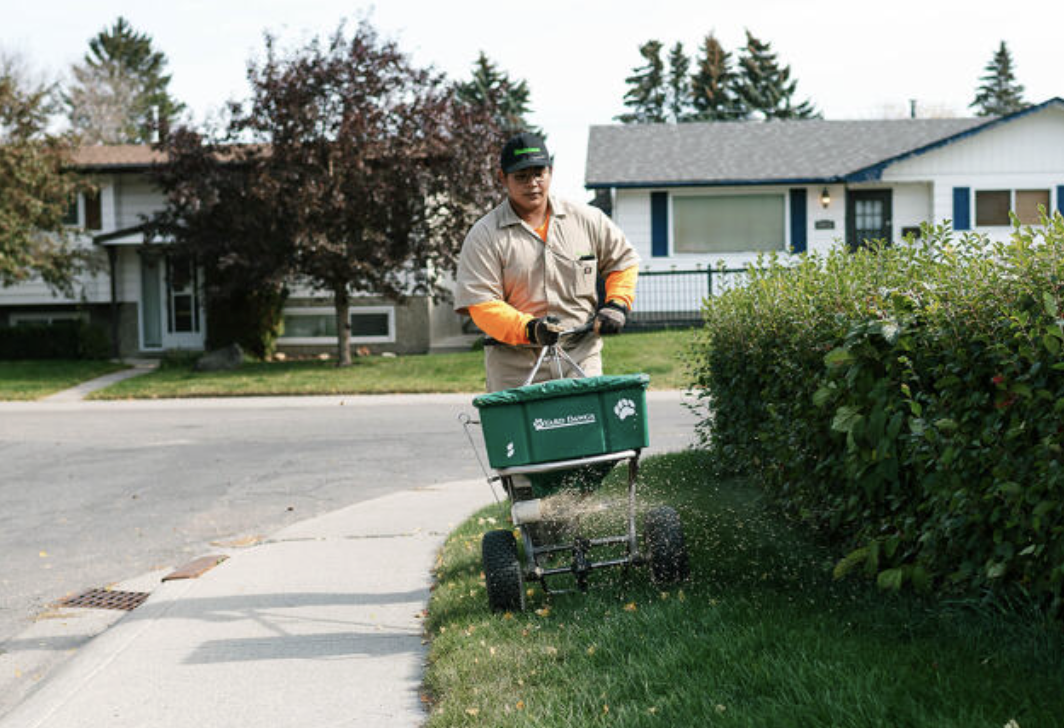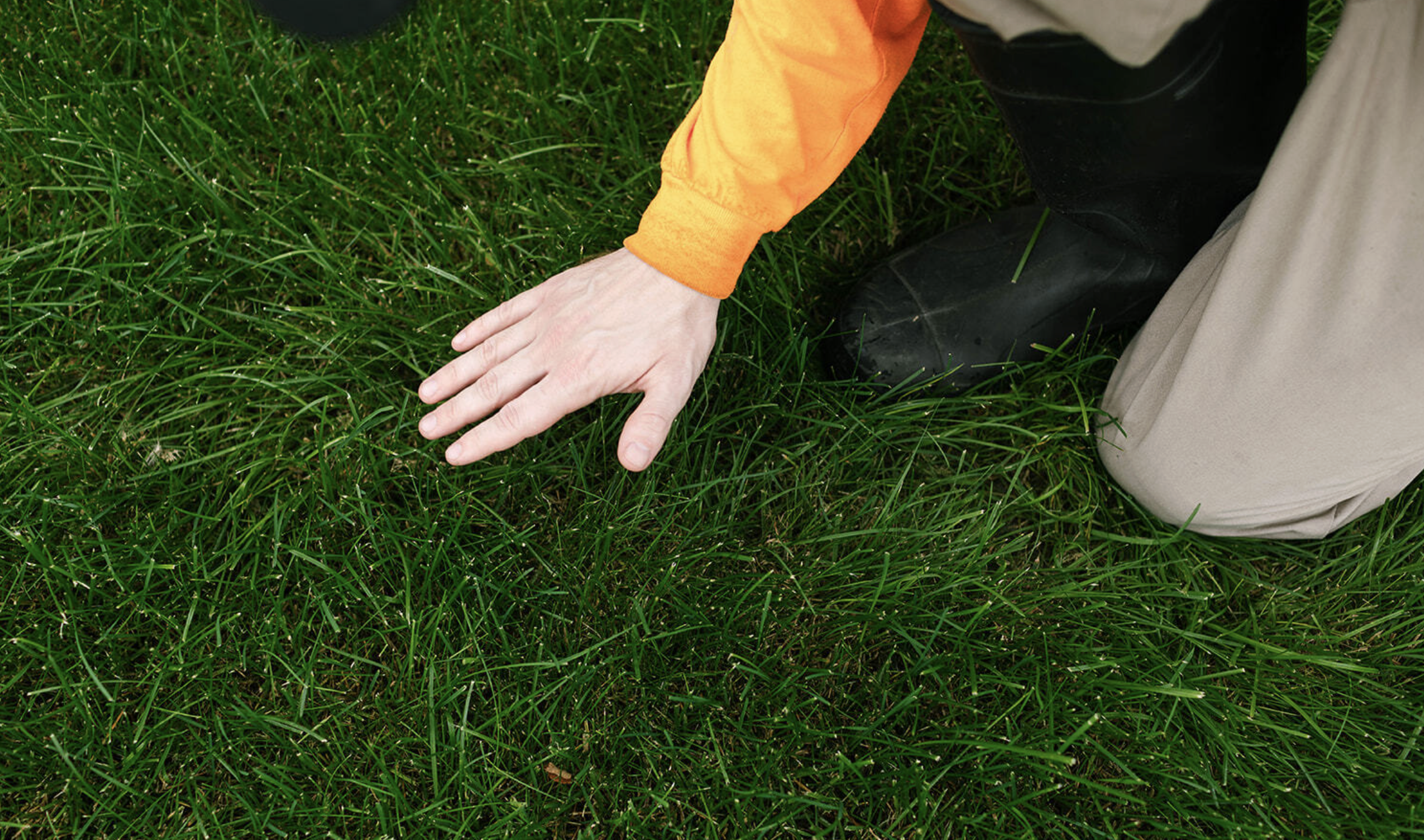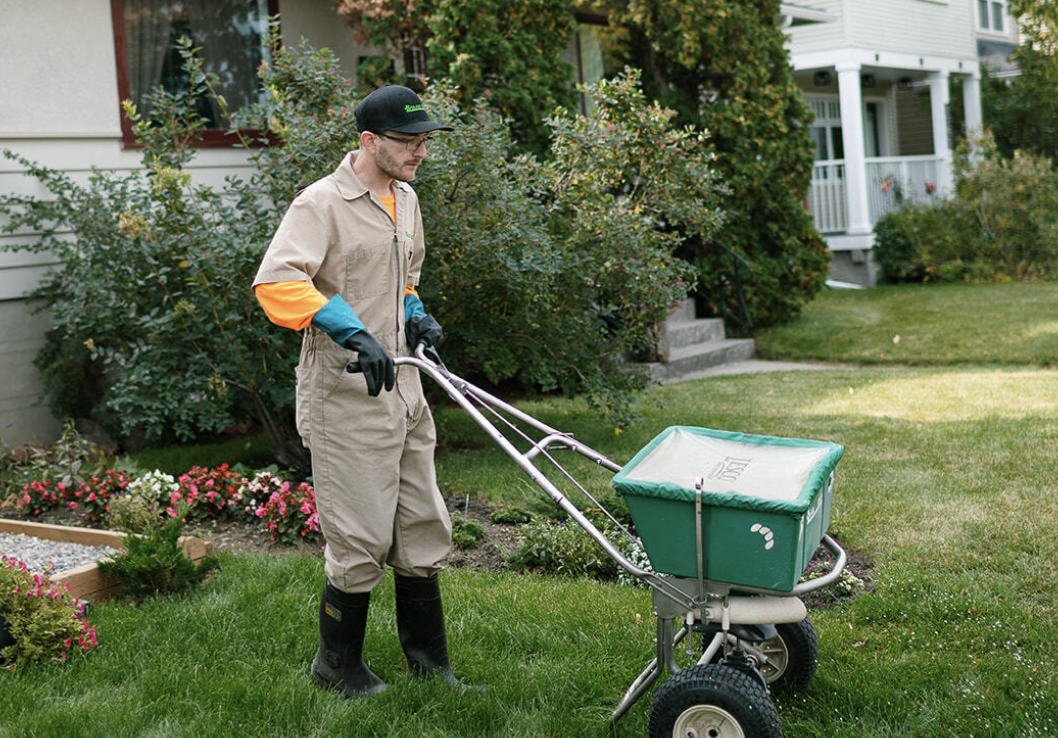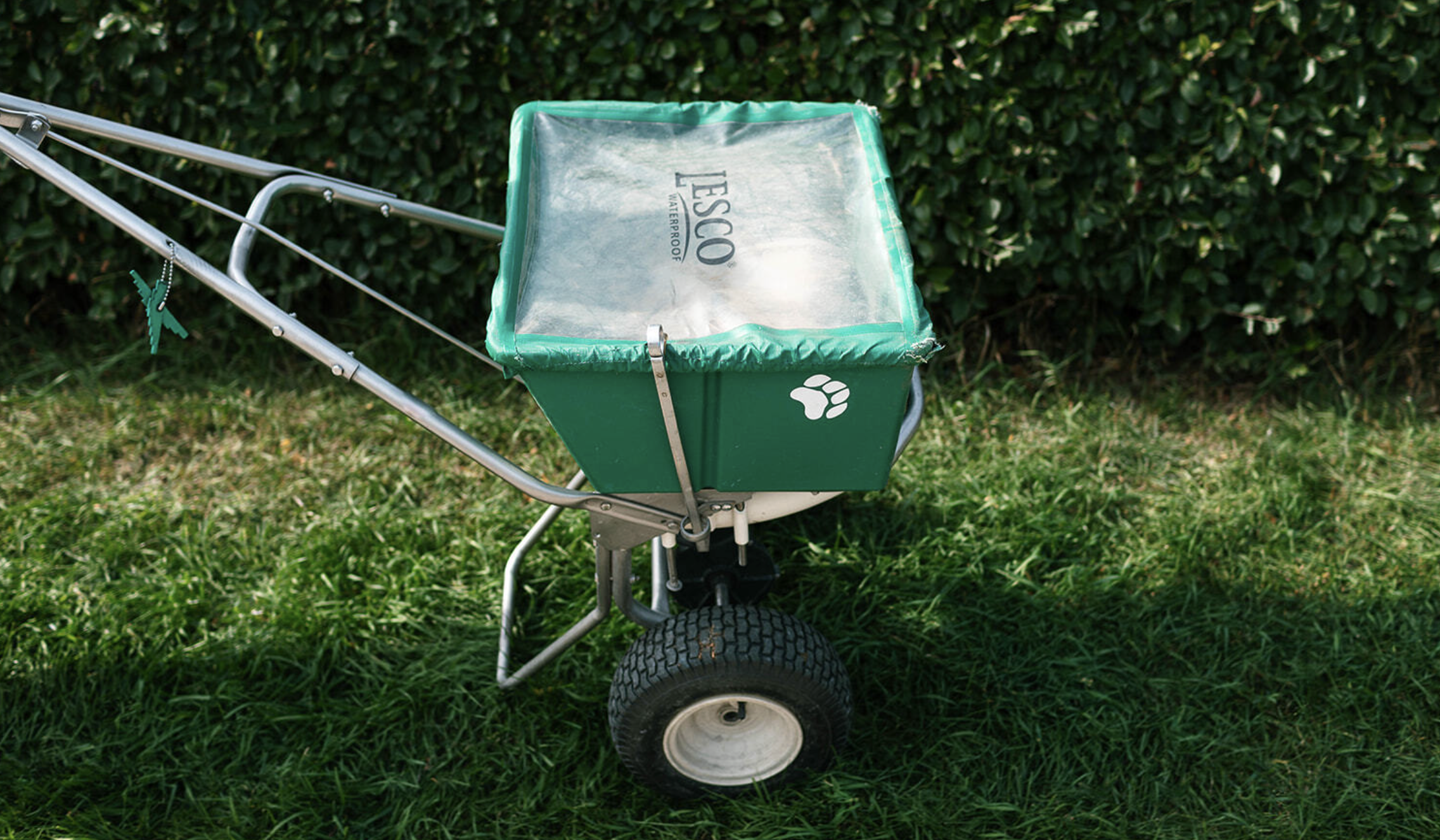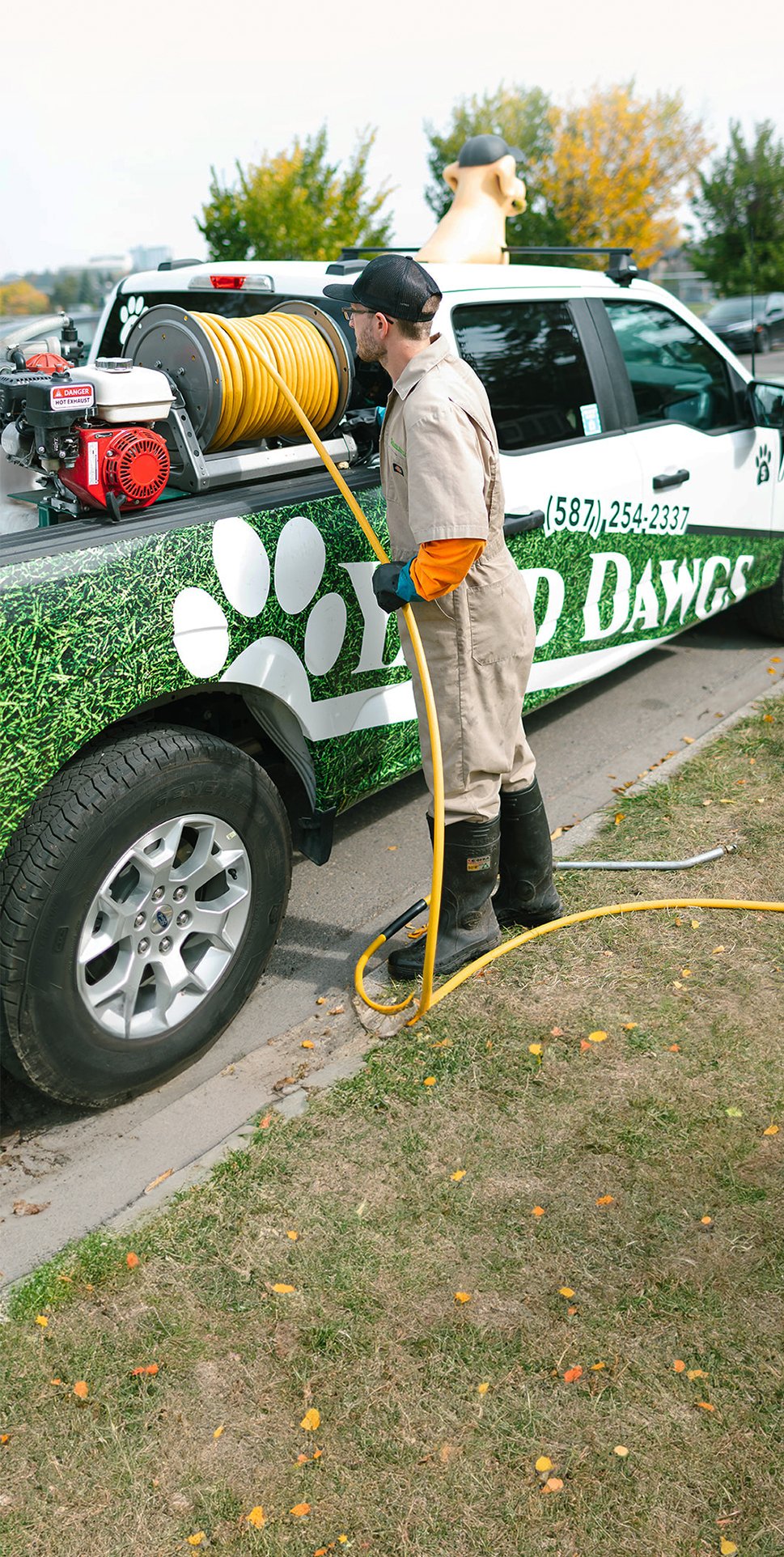How Does Soil Quality Change In New Subdivisions?
Something new homeowners often fail to consider is the condition of the soil surrounding their new property — typically far below ideal standards. Poor soil quality not only affects how your lawn looks, but also impacts your ability to grow healthy grass and sustain plant life. That’s where professional lawn care services make a difference — helping you restore balance to your soil and bring your outdoor space to life.

Firstly, to begin building a home, the topsoil is stripped from the property.
.png?width=725&name=Blog%20Image%20Sizing%20(6).png)
What Is Topsoil?
The topsoil layer is where nutrients live, where the sunlight and water is absorbed. It provides the much-needed groundwork for plant life. This layer goes to a depth of between 5 to 10 inches.
Developers remove it in order to build the foundation of your home. The reason topsoil is so beneficially for growing grass and plants in general, is the same reason it’s incompatible to home building. If the property developer is worth his or her salt, the topsoil should be distributed back over the property after the home has been completed. However, developers will not always return the topsoil to the property. Realistically, if a developer buys the land, develops it, and then sells the land, the topsoil was theirs to do with as they saw fit.
Whether your topsoil was returned or not, the deeper issue is that construction-grade soil rarely supports healthy turf. For improving soil quality, especially if you're planning to grow a lawn or garden, you'll need to reintroduce the elements removed during construction — like organic matter, proper nutrients, and microbial life — which are essential to long-term lawn health.
What Are Homeowners Saying?
A community forum has many posts about this from frustrated homeowners.
SoulSurvival: “Do you think this is part of some evil plan? Because it hardly seems like it would be worth the trouble, to steal all the topsoil, haul it away, bag it, etc., etc. They had a huge recreation center here, the taxpayers paid 100 million for and these crook contractors stole all the topsoil, and then they tried to plant this expansive landscaping, probably 10 million dollars worth of landscaping and nothing will grow in the raped soil that’s been left.”
Meadmkr: “Developers have been doing this for decades. I had to basically force the builder to put topsoil back down before they laid the sod. Fortunately, I went over the yard and pulled out as much of the rocks, wire, and other building debris as I could before the sod was put down. I even had to basically bribe the foreman … to let me put in additional interior wall insulation at night between pre-drywall inspection and when the drywall went up. If we ever build again, it won’t be with a developer but a BUILDER that works for us (not the corporation).”
However, on this forum a contractor also posted, and his response is as follows:
ULTRAMAGNUM: “I used to be a contractor and we met every year to plan evil things upon those new home buyers. It made our jobs really fun and satisfied the devil within,” he continued “why do people think contractors purposely try to mess with homeowners? We build the standards of the county, with a design by the architect or owner. We build in a fashion in an attempt to remain profitable, and to avoid lawsuit. No evil intent, scalping soils back and clearing way for crawlspaces and home construction is part of what is necessary to build a home. Many job sites will stockpile topsoil and use it later for landscaping. Have you ever tried to build a house on topsoil? Not a sound bed for a concrete foundation.”
So, to reiterate, the most important takeaway from this exchange is rather than a plot against homeowners, topsoil removal is necessary for the success of a home’s foundation. Whether is gets returned to the property is up to the decision of the contractor..png?width=6912&name=Call%20To%20Action%20(20).png)
What Leads To Bad Soil?.png?width=725&name=Blog%20Image%20Sizing%20(7).png)
Instead of nutrient-rich topsoil, the builder often uses subsoil or compacted fill around your home’s edges. This low-quality, nutrient-depleted material creates poor growing conditions. Over time, homeowners start to see issues like water runoff, shallow root systems, and patchy grass — all signs of poor soil quality that must be addressed through dedicated lawn care strategies.
Soils containing peat or expansive clays are the worst type of soils to build homes on. Soil engineers are able to tell developers what soil is available in any given building lot. If the soil is too soft, developers will need to compact the soil before beginning the building project. Compaction is not conducive to lawn growth when it’s time to lay sod. Roots struggle for air, water, and nutrients in compacted soil. Additionally, developers often spill lime from brick work, gravel and concrete during the construction process.
We’ve established the challenges that come from soil on the property of a newly constructed home. So, knowing your soil is disturbed, you need to come up with a plan of attack. You’ll notice your soil is compacted, there is no organic matter, a clay-like texture, water runs off the surface rather than getting soaked in, and there are no, or very few, air pockets. How do you combat this?
What's The Fix?
Firstly, don’t lose hope, there is a light at the end of this tunnel. The light just may be farther away for some people, depending on the extend of the problem. To begin, you’ll want to supplement your lawn with a mulch or compost top dressing. be sure to lay it 2-inches thick over the soil you want to plant in. A mulch will help break down the soil and create a better environment for grass growth..png?width=725&name=Blog%20Image%20Sizing%20(8).png) In general, Alberta soil is very alkaline, and clay based in general, so although this condition is aggravated in new homes, it’s something all homeowners should be aware of. What makes new homeowners additionally different is the fact that they may not have grass to begin with. I’ve seen this in newer communities in South Calgary. It’s important to complete your home build by finishing off the landscape. So, bring in compost/mulch and topsoil and till it into the existing soil. You could also obtain a soil test to determine which nutrients and lacking and adjust accordingly. Grass seed and sod are both feasible options, although the first requires more maintenance and the second requires more money. However, if your builder did not place either down, it’s up to you to do the leg work.
In general, Alberta soil is very alkaline, and clay based in general, so although this condition is aggravated in new homes, it’s something all homeowners should be aware of. What makes new homeowners additionally different is the fact that they may not have grass to begin with. I’ve seen this in newer communities in South Calgary. It’s important to complete your home build by finishing off the landscape. So, bring in compost/mulch and topsoil and till it into the existing soil. You could also obtain a soil test to determine which nutrients and lacking and adjust accordingly. Grass seed and sod are both feasible options, although the first requires more maintenance and the second requires more money. However, if your builder did not place either down, it’s up to you to do the leg work.
Perhaps your developer did put down new sod. There’s a likelihood it’s not the right grass type and you may see it diminish in form over the following weeks. To attribute for the damage that may have been caused, you’ll want to follow these steps:
- After scattering your topsoil and tilling it into the surface, lay down the grass seed or sod
- Next, obtain a fertilizer rich in phosphorus to ensure the roots of your grass grow longer and stronger
- Water thoroughly so the fertilizer has a chance to soak into the ground
Honestly, the real battle comes the following lawn care season. It’s best you book with a company, and the reason for that is your lawn is a completely blank, and more accurately empty, slate. Empty of nutrients and lacking an established root system. The grass needs support to be able to thrive and that’s where fertilizer, aeration and weed control come into play. Truly, you’ll need each of these tools for your lawn to have the ultimate chance of survival.
For homeowners seeking a faster and more reliable solution, partnering with a professional lawn care service ensures the right materials and methods are used from the start. From soil testing and proper topdressing to aeration and fertilization, expert help makes all the difference in improving soil quality effectively and sustainably.
What Is Good Quality Soil?
When improving your lawn, it helps to know what you’re aiming for. Good quality soil is loose, crumbly, and rich in organic matter. It holds moisture well without becoming waterlogged, and it drains effectively so roots don’t sit in standing water. The ideal soil contains a healthy balance of sand, silt, and clay—what’s known as loam—and includes plenty of microorganisms that support plant life.
A sign of high-quality soil is when it smells earthy and has a dark, rich colour. It should feel soft enough to dig into with a hand trowel, but not so loose that it blows away in wind or erodes in rain. If you spot earthworms while digging, that’s another good sign—worms aerate the soil and indicate a thriving ecosystem.
In Alberta, native soils tend to be more alkaline and clay-heavy, which means amending with compost or mulch is often necessary to build a fertile base. Understanding what good soil looks like helps you track your progress and know when your lawn is ready to support healthy, long-lasting grass.
To Consider
Just imagine your brand-new home, everything at peak performance and squeaky clean. Why should the outside of your home not match the inside? You deserve a lawn that reflects the same level of care as your new home. With time — and the right lawn care services — a healthy, green, weed-free yard is absolutely within reach, starting with the soil beneath your feet.







.png)

